Abstract
1. A study has been made of the effect of continuous vibration, at 150 Hz, upon the response of muscle spindle afferents to low frequency sinusoidal stretching (1 and 8 Hz). Using the soleus muscle of the anaesthetized cat, with severed ventral roots, recordings were made of single Ia afferents and of the massed Ia afferent discharges in the main bulk of the cut L7 dorsal root. 2. When the amplitude of vibration was large (50 micrometers, short pulses) and that of the sinusoidal stretching was not too great (50-100 micrometers, peak-to-peak) the discharge of the afferents was largely locked 1:1 to the vibration and the response to the sinusoidal stretching was abolished. 3. When the amplitude of the vibration was reduced to below that eliciting continuous afferent driving, then the response to sinusoidal stretching of any amplitude was often markedly increased. This arose through the vibration having a much more powerful excitatory action during the rising phase of the sinusoidal stretch than it did during the falling phase. 4. Averaged over a full cycle, the phase of the response to the sinusoidal stretching tended to be delayed during the vibration in comparison with the normal. This was largely dependent upon the afferents continuing to respond maximally to the vibration around the peak of the sinusoidal stretch, at which stage their unvibrated response is declining, rather than to a phase lag of the whole pattern of response. 5. The results are discussed in relation to the effects of vibration on tremor and the human stretch reflex, and on the determination of the frequency-response of spindle afferents.
Full text
PDF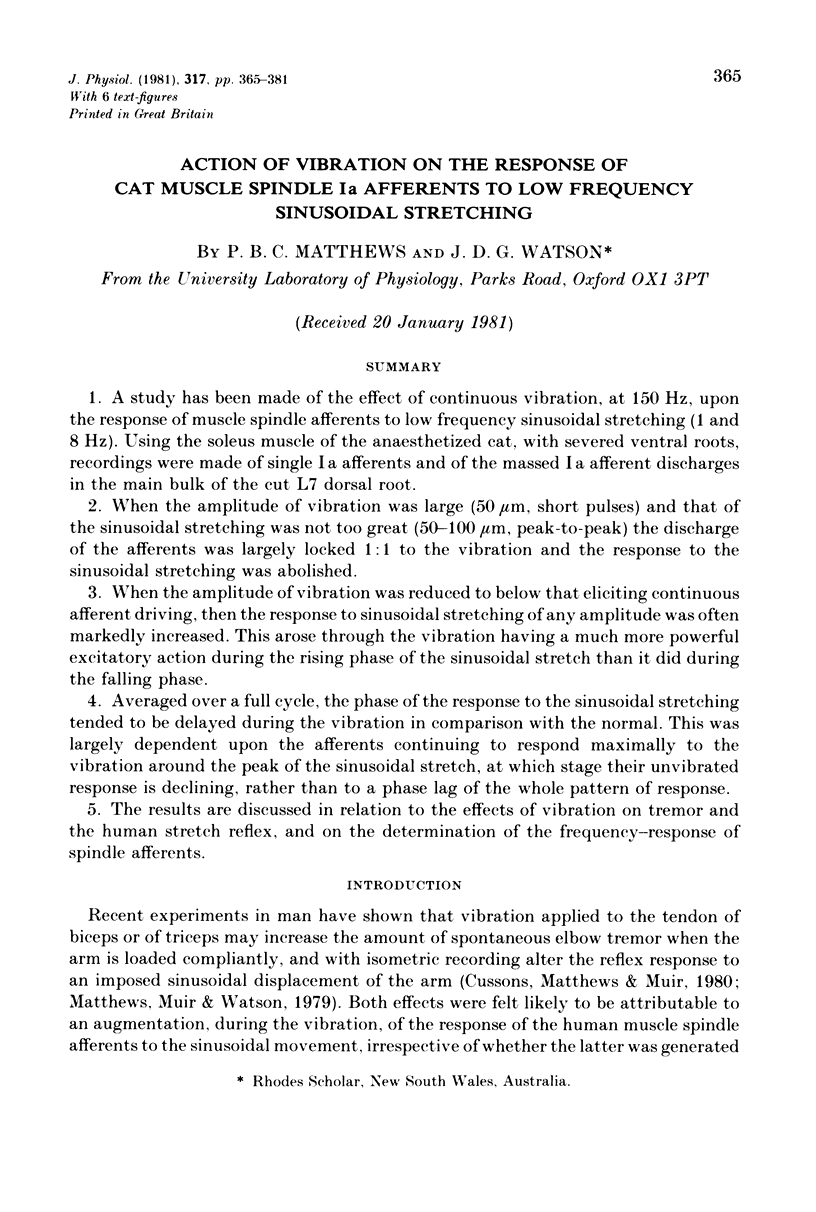
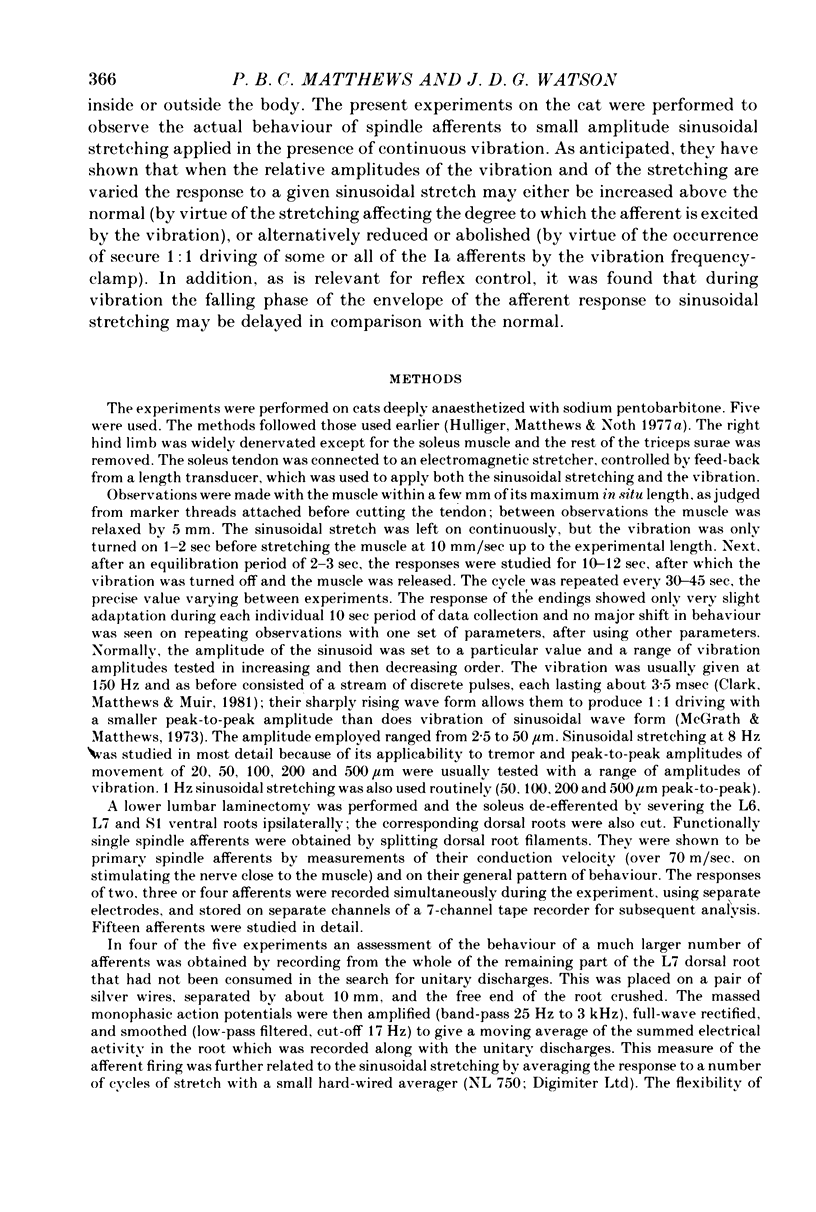
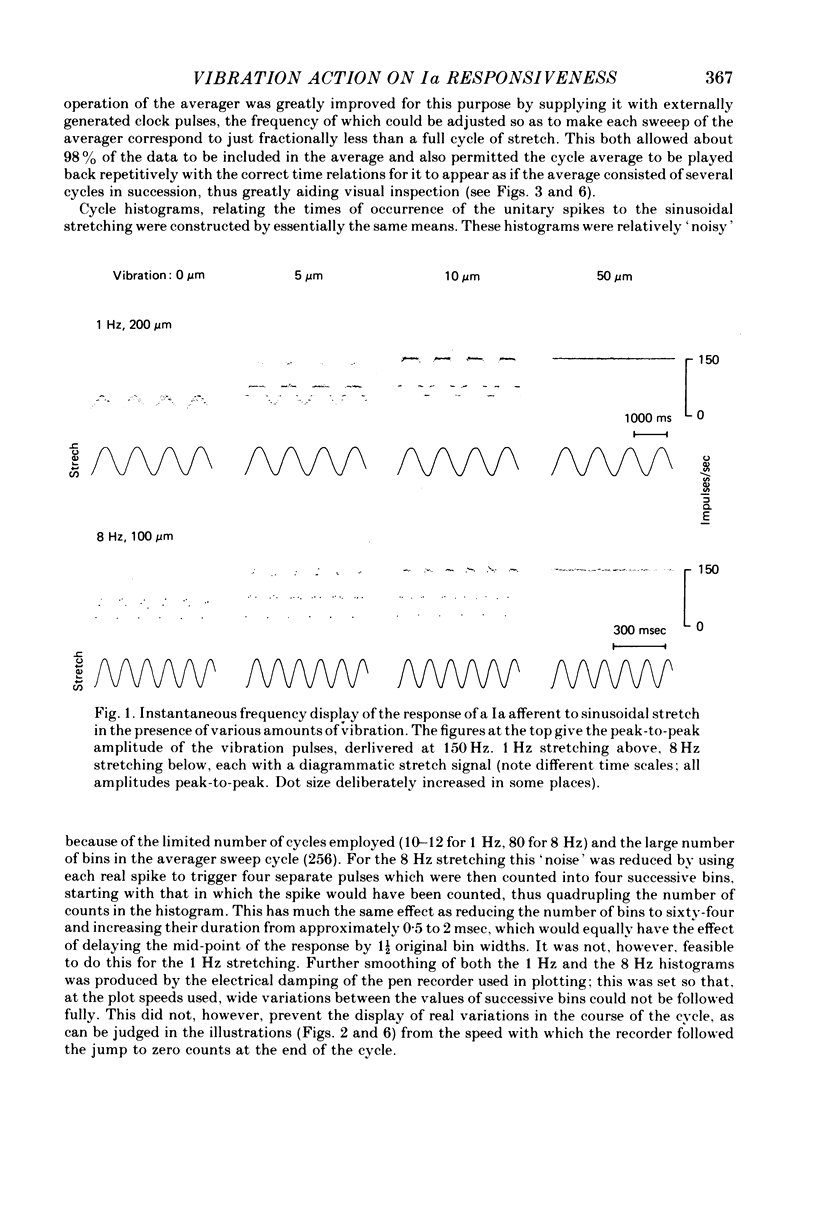
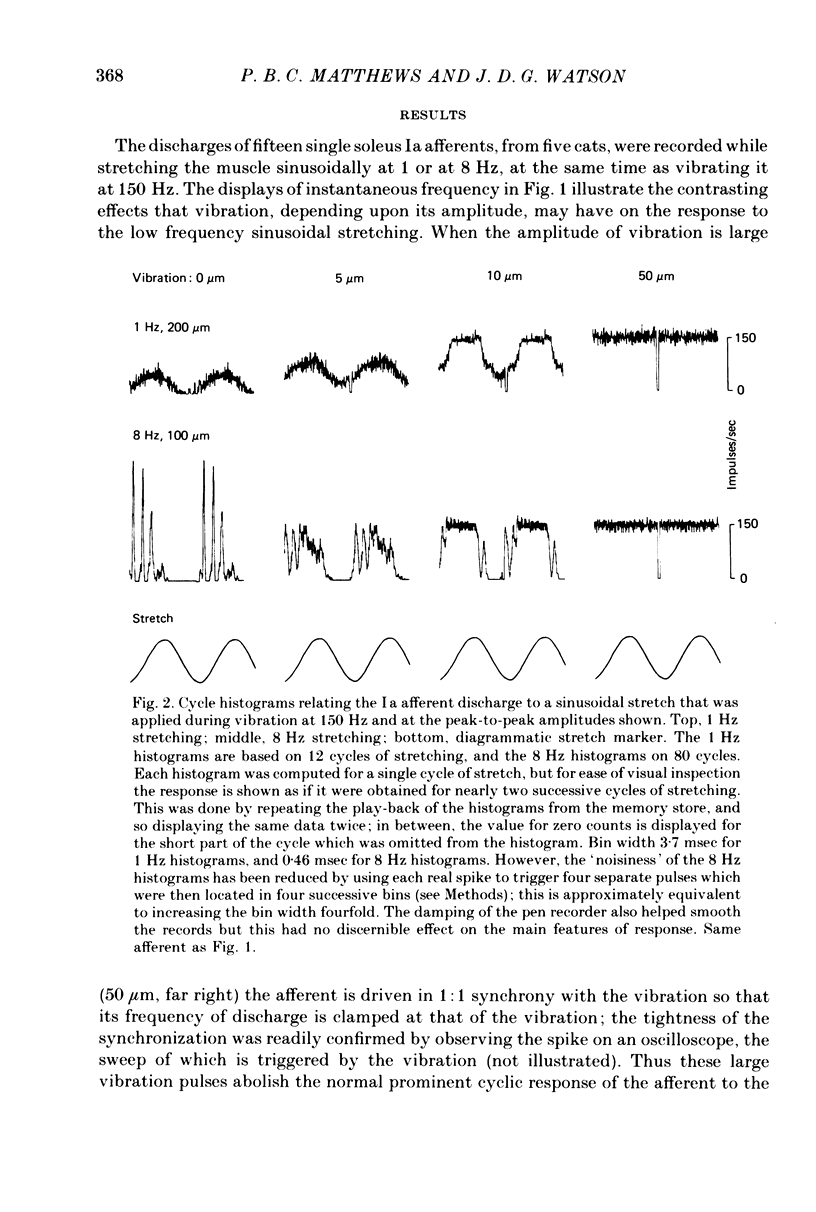


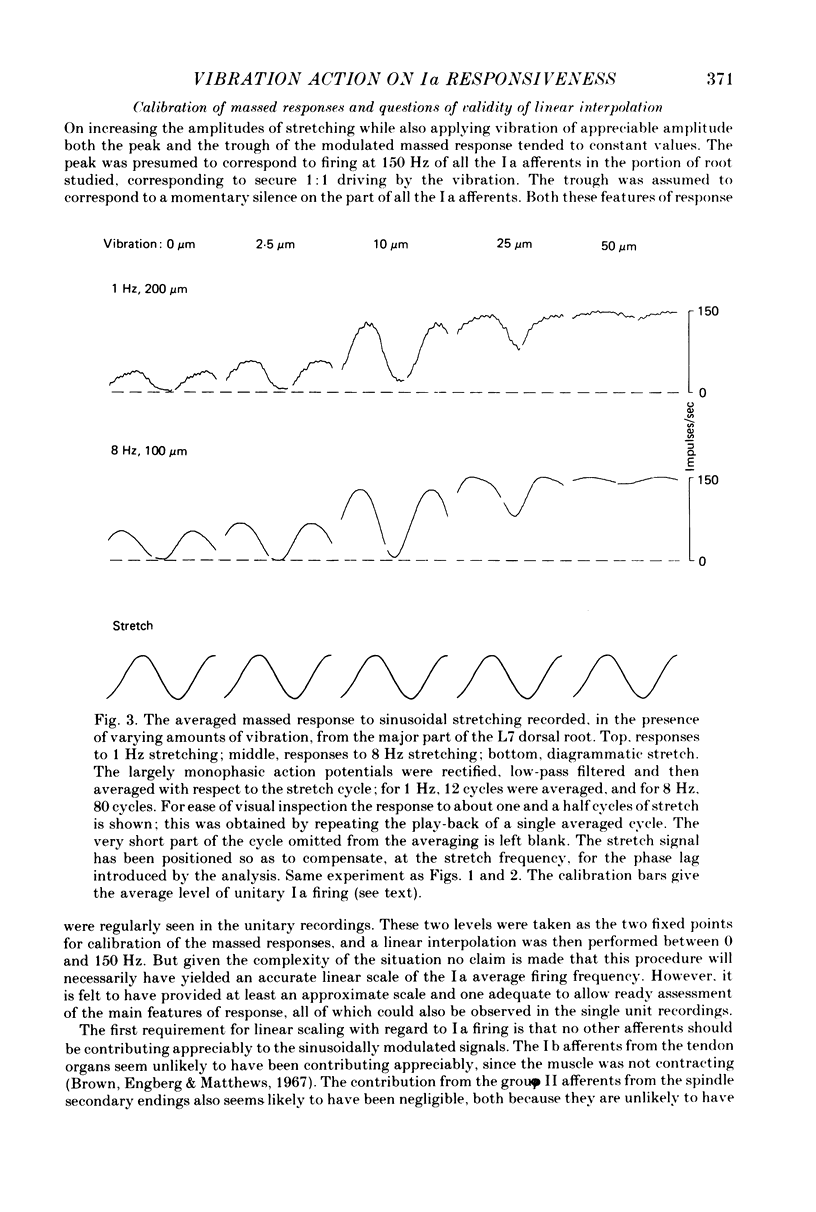


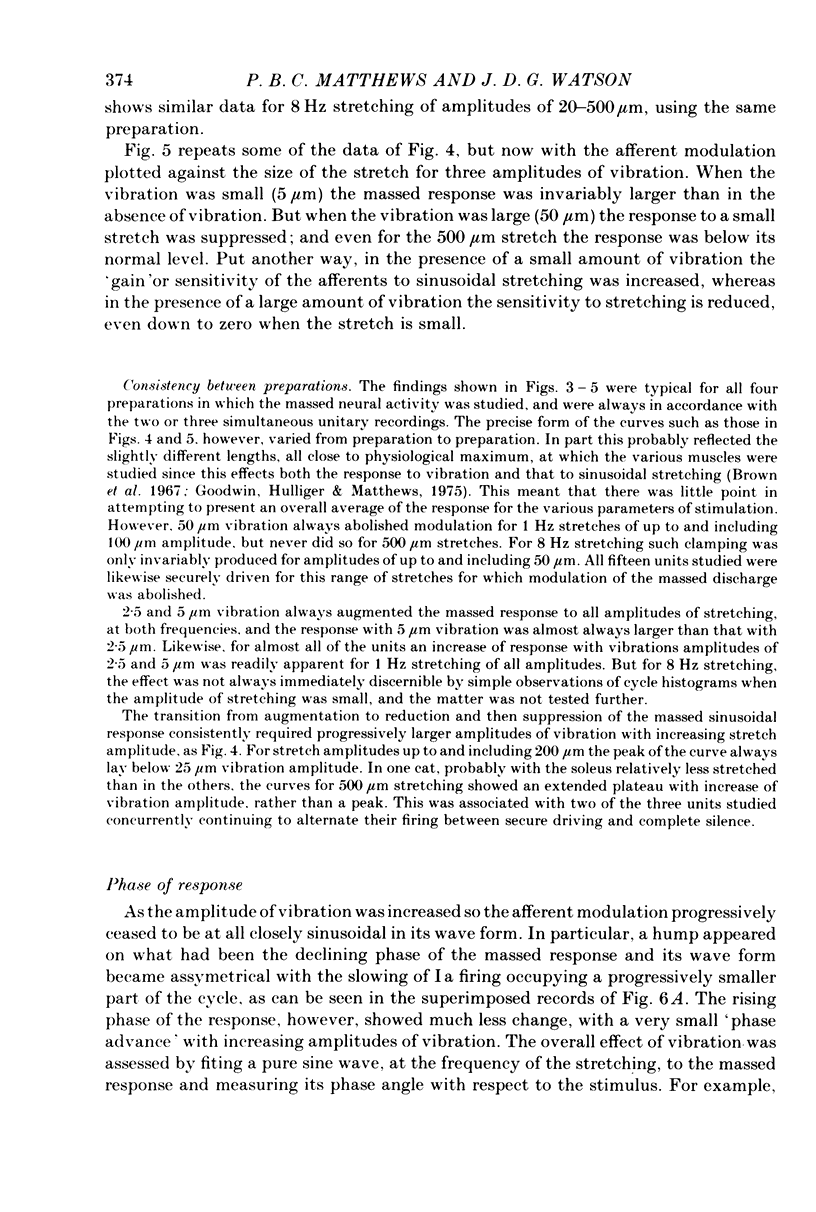
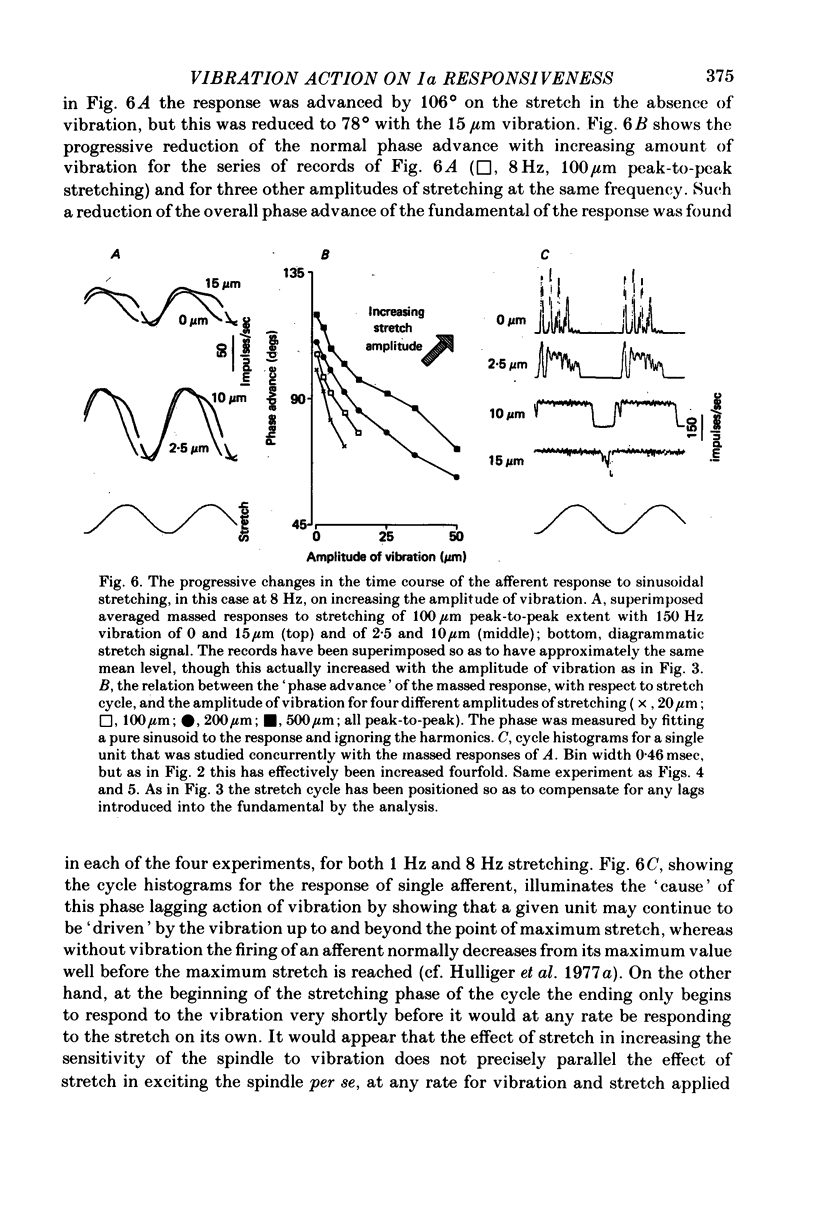

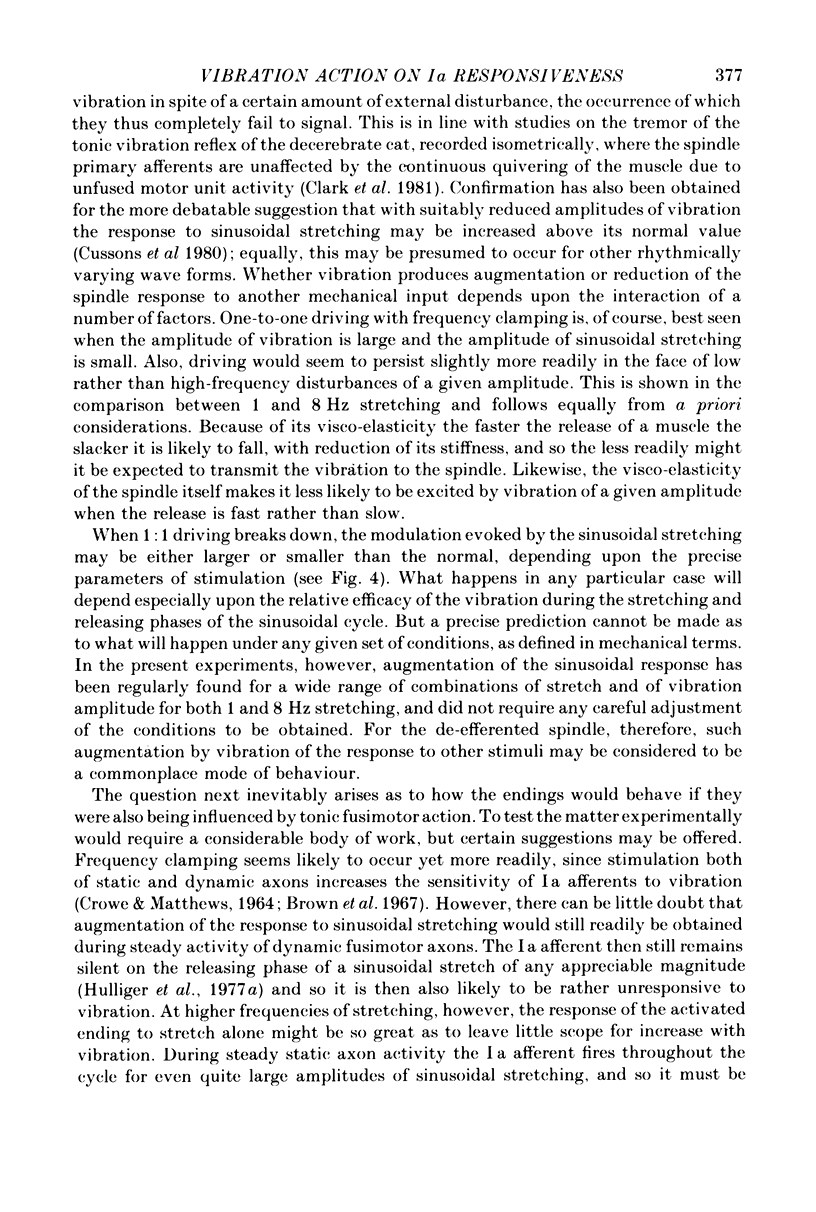



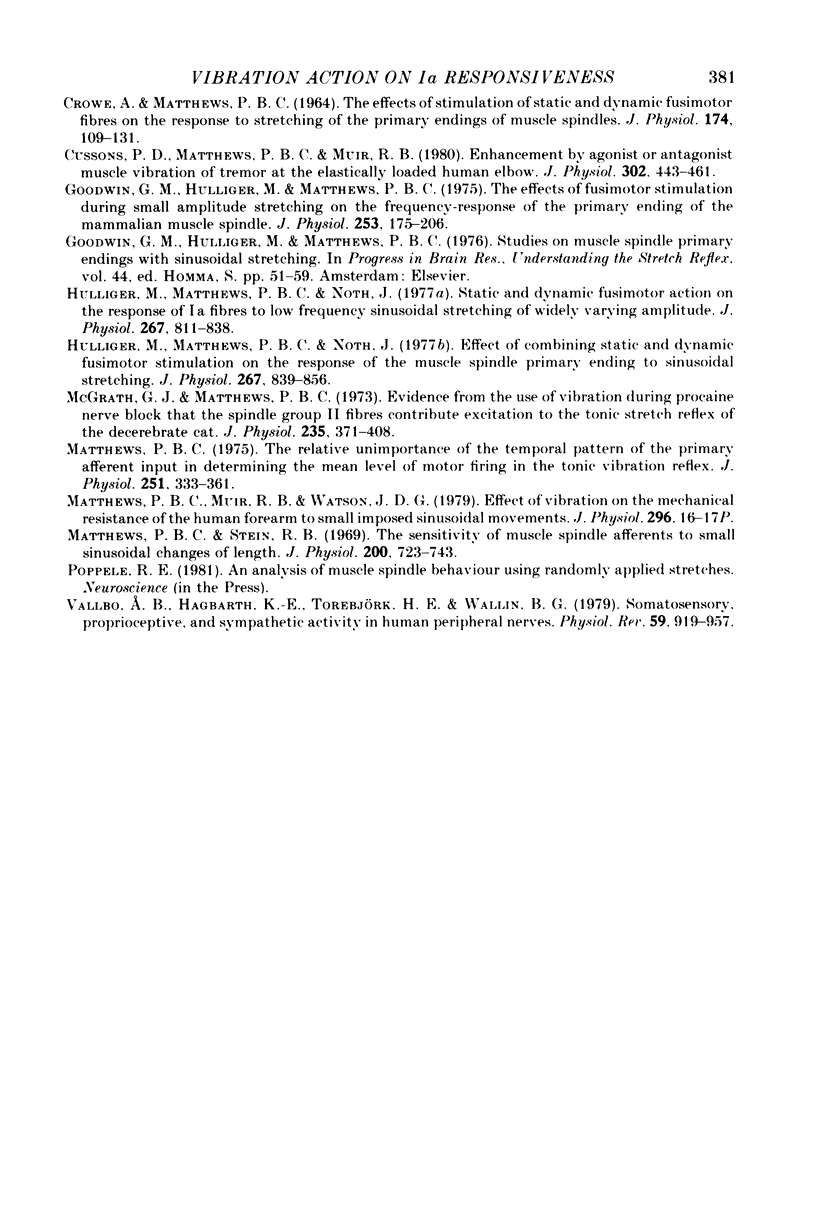
Selected References
These references are in PubMed. This may not be the complete list of references from this article.
- Brown M. C., Engberg I., Matthews P. B. The relative sensitivity to vibration of muscle receptors of the cat. J Physiol. 1967 Oct;192(3):773–800. doi: 10.1113/jphysiol.1967.sp008330. [DOI] [PMC free article] [PubMed] [Google Scholar]
- Burke D., Hagbarth K. E., Löfstedt L., Wallin B. G. The responses of human muscle spindle endings to vibration during isometric contraction. J Physiol. 1976 Oct;261(3):695–711. doi: 10.1113/jphysiol.1976.sp011581. [DOI] [PMC free article] [PubMed] [Google Scholar]
- CROWE A., MATTHEWS P. B. THE EFFECTS OF STIMULATION OF STATIC AND DYNAMIC FUSIMOTOR FIBRES ON THE RESPONSE TO STRETCHING OF THE PRIMARY ENDINGS OF MUSCLE SPINDLES. J Physiol. 1964 Oct;174:109–131. doi: 10.1113/jphysiol.1964.sp007476. [DOI] [PMC free article] [PubMed] [Google Scholar]
- Chen W. J., Poppele R. E. Small-signal analysis of response of mammalian muscle spindles with fusimotor stimulation and a comparison with large-signal responses. J Neurophysiol. 1978 Jan;41(1):15–27. doi: 10.1152/jn.1978.41.1.15. [DOI] [PubMed] [Google Scholar]
- Clark F. J., Matthews P. B., Muir R. B. Response of soleus Ia afferents to vibration in the presence of the tonic vibration reflex in the decerebrate cat. J Physiol. 1981 Feb;311:97–112. doi: 10.1113/jphysiol.1981.sp013575. [DOI] [PMC free article] [PubMed] [Google Scholar]
- Cussons P. D., Matthews P. B., Muir R. B. Enhancement by agonist or antagonist muscle vibration of tremor at the elastically loaded human elbow. J Physiol. 1980 May;302:443–461. doi: 10.1113/jphysiol.1980.sp013255. [DOI] [PMC free article] [PubMed] [Google Scholar]
- Goodwin G. M., Hulliger M., Matthews P. B. The effects of fusimotor stimulation during small amplitude stretching on the frequency-response of the primary ending of the mammalian muscle spindle. J Physiol. 1975 Dec;253(1):175–206. doi: 10.1113/jphysiol.1975.sp011186. [DOI] [PMC free article] [PubMed] [Google Scholar]
- Hulliger M., Matthews P. B., Noth J. Effects of combining static and dynamic fusimotor stimulation on the response of the muscle spindle primary ending to sinusoidal stretching. J Physiol. 1977 Jun;267(3):839–856. doi: 10.1113/jphysiol.1977.sp011840. [DOI] [PMC free article] [PubMed] [Google Scholar]
- Hulliger M., Matthews P. B., Noth J. Static and dynamic fusimotor action on the response of Ia fibres to low frequency sinusoidal stretching of widely ranging amplitude. J Physiol. 1977 Jun;267(3):811–838. doi: 10.1113/jphysiol.1977.sp011839. [DOI] [PMC free article] [PubMed] [Google Scholar]
- Matthews P. B., Stein R. B. The sensitivity of muscle spindle afferents to small sinusoidal changes of length. J Physiol. 1969 Feb;200(3):723–743. doi: 10.1113/jphysiol.1969.sp008719. [DOI] [PMC free article] [PubMed] [Google Scholar]
- Matthews P. B. The relative unimportance of the temporal pattern of the primary afferent input in determining the mean level of motor firing in the tonic vibration reflex. J Physiol. 1975 Oct;251(2):333–361. doi: 10.1113/jphysiol.1975.sp011096. [DOI] [PMC free article] [PubMed] [Google Scholar]
- McGrath G. J., Matthews P. B. Evidence from the use of vibration during procaine nerve block that the spindle group II fibres contribute excitation to the tonic stretch reflex of the decerebrate cat. J Physiol. 1973 Dec;235(2):371–408. doi: 10.1113/jphysiol.1973.sp010392. [DOI] [PMC free article] [PubMed] [Google Scholar]
- Vallbo A. B., Hagbarth K. E., Torebjörk H. E., Wallin B. G. Somatosensory, proprioceptive, and sympathetic activity in human peripheral nerves. Physiol Rev. 1979 Oct;59(4):919–957. doi: 10.1152/physrev.1979.59.4.919. [DOI] [PubMed] [Google Scholar]


